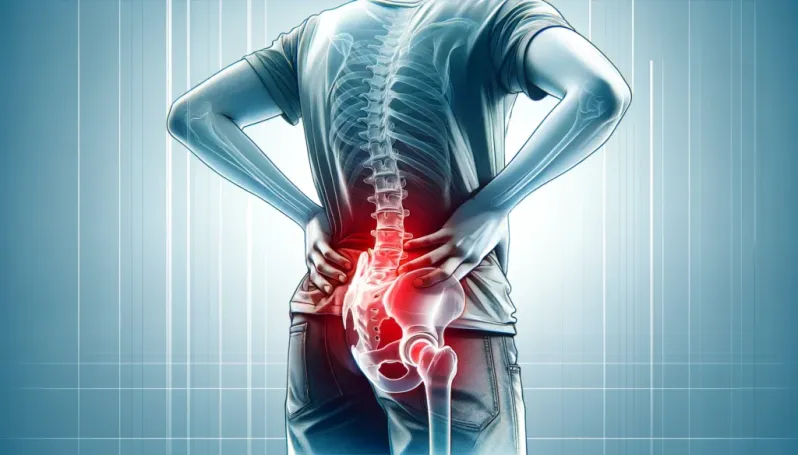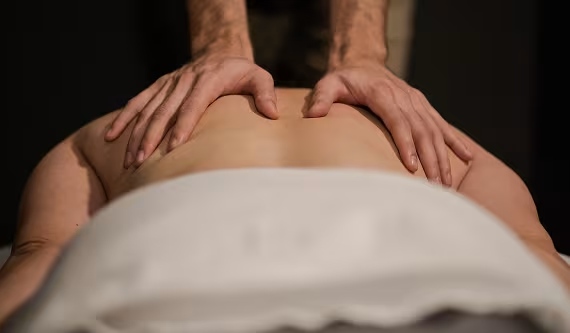Hip pain can significantly impact mobility, performance, and overall quality of life—especially for active individuals who rely on their bodies to keep up with training, work, and everyday demands. Whether you’re dealing with bursitis, tendonitis, muscle strain, or the effects of overuse, kinesiology taping for hip pain offers a practical, non-invasive way to support healing and stay moving.
KT tape helps by gently lifting the skin, which can reduce inflammation, improve circulation, and provide targeted support to strained or irritated muscles and joints. It’s particularly effective for addressing hip pain caused by bursitis, helping to relieve pressure and discomfort without limiting your range of motion.
In this guide, we’ll explore how kinesiology taping for hip pain works, including step-by-step application techniques, expert-backed taping strategies, and key tips for maximizing results. Whether you’re a weekend warrior, athlete, or someone recovering from injury in Edmonton or Sherwood Park, you’ll find the tools you need to manage pain and move with greater confidence.
Understanding Hip Pain in Active Lifestyles

Common Causes of Hip Pain
Hip pain often arises from overuse, repetitive stress, or direct trauma. For many active individuals, issues like bursitis, tendonitis, or IT Band syndrome can lead to chronic discomfort. If left unchecked, these conditions may affect your ability to perform strength exercises or participate in your favorite sports.
Impact on Performance
Hip pain doesn’t just hurt—it disrupts movement, weakens lower body strength, and can seriously impact athletic performance. When pain limits your ability to perform key movements like squats, lunges, or even simple daily tasks, your body may start to compensate, increasing the risk of further injury.
That’s where kinesiology taping for hip pain can make a difference. KT tape hip application provides gentle, targeted support to the affected area, helping reduce tension, improve circulation, and promote better alignment. Whether you’re managing ongoing discomfort or recovering from an injury, kinesiology taping for hip pain can be a valuable tool in restoring natural movement and maintaining performance.
How to Use KT Tape for Hip Pain: Step-by-Step Application
Kinesiology taping can significantly aid in managing hip pain by providing support and enhancing proprioception. Below is a simplified approach to help you apply Kinesiology tape for hip pain effectively.
Preparation
- Clean and Dry: Wash and dry the hip area to help the tape adhere better.
- Measure Tape: Cut three strips of tape, each about 6-8 inches long, for an effective application along the IT Band.
Applying the Tape
- Round the Corners: Round the edges of each strip to prevent snagging on clothing.
- Locate the Pain Point: Identify the painful area to serve as the center point for taping.
- First Strip: Place the first tape strip over the pain point without stretching it.
- Additional Strips: Apply the remaining strips in a star pattern around the pain point, using a slight stretch for better support.
Tips for Best Results
- Maintain Consistent Tension: Avoid uneven pressure by keeping tension consistent across all strips.
- Minimize Discomfort in Hairy Areas: For easier removal, trim hair lightly or use baby oil to loosen the tape.
- Secure Edges: Rounding edges keeps the tape from peeling prematurely.
Maximizing KT Tape Benefits for Hip Pain
Benefits of KT Taping for Pain Management
Kinesiology tape boosts proprioceptive feedback, which helps the body understand its position and movement. By lifting the skin slightly, the tape improves blood flow and reduces inflammation, making it an ideal tool for pain management. KT tape for hip pain bursitis, in particular, can provide much-needed relief.
Combining KT Tape with Other Therapies
Consider enhancing Kinesiology taping effects by combining it with therapies such as:
- Physical Therapy: Adding physical therapy exercises improves hip stability and muscle strength. This dual approach offers a comprehensive solution to managing hip pain.
- Massage Therapy: Therapies like deep tissue massage or therapeutic massage can further alleviate tension and promote blood flow, complementing KT tape’s effects.
For those seeking local options, Sherwood Park massage therapy offers tailored support for active individuals in the area.
How Athletes Use KT Tape for Hip Pain Relief
Athletes dealing with hip discomfort often turn to KT tape to stay active. From distance runners to weightlifters, Kinesiology tape has enabled many to manage pain, reduce injury risk, and return to peak performance. Individuals facing IT Band syndrome, in particular, find significant relief, allowing them to continue training with reduced discomfort.
Key Do’s and Don’ts for Effective Taping
Do’s:
- Seek Professional Advice: Always consult a medical professional if you have allergies to adhesives or are dealing with serious hip pain.
- Keep Tape Dry: Moisture weakens the tape’s adhesive properties, so avoid water or sweat-heavy activities right after taping.
Don’ts:
- Avoid Overstretching: Overstretching the tape can hinder circulation and potentially worsen the pain.
- Don’t Ignore Skin Reactions: If you notice redness or increased discomfort, remove the tape immediately and consult a healthcare provider.
Relieve Hip Pain and Boost Performance with KT Tape
Kinesiology taping for hip pain is a non-invasive, effective method for reducing discomfort and enhancing performance—especially for active individuals. Whether you’re managing hip bursitis, general muscle strain, or tightness from overuse, properly applied KT tape helps support muscle function, increase circulation, and speed up recovery.
By reducing tension and providing stability without restricting movement, kinesiology taping for hip pain can keep you active and aligned. Explore the taping techniques that work best for your body, and consult a trained professional for personalized guidance to ensure safe, effective application tailored to your needs.




